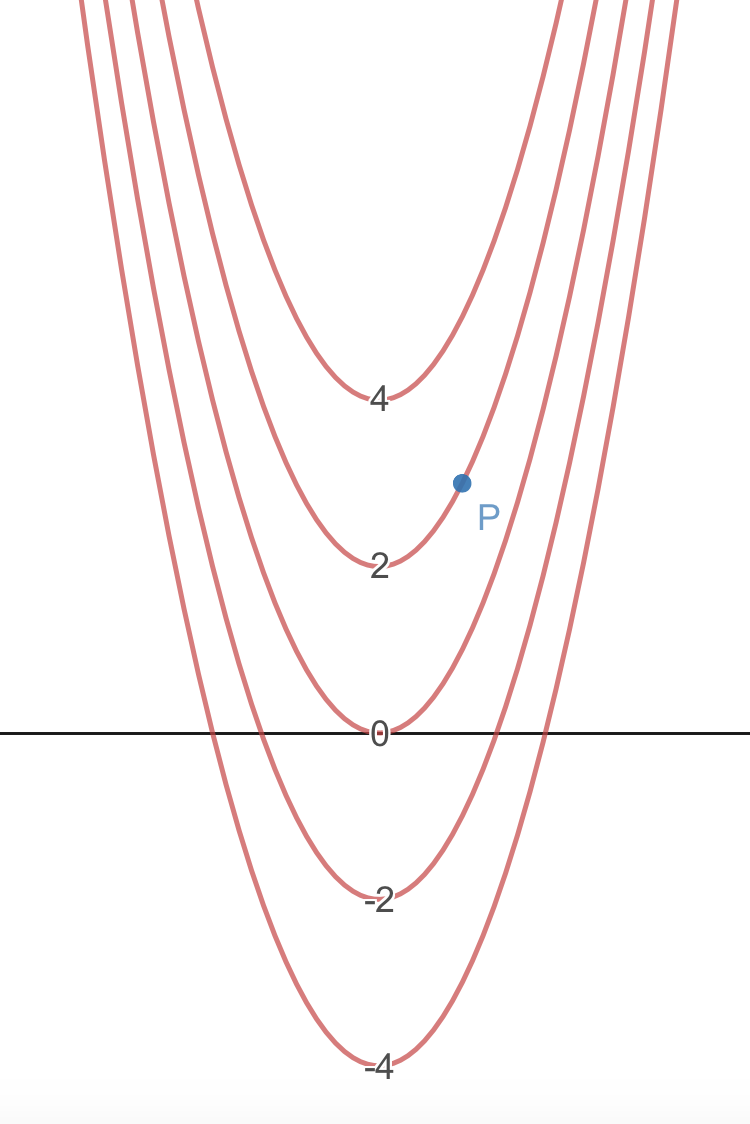Gradient is Perpendicular to Level Curves
The following is a contour map for a function . We will examine why at any point , the gradient has to be perpendicular to the (tangent to the) level curve.

- Since represents the level curve through , we know that is constant, which means
- Since is constant, we know .
- By the chain rule,
- The point corresponds to , so we can plug in to get
- What does represent? The vector from the origin to . A tangent vector to the curve at . A vector perpendicular to the curve at .
- Since the dot product is , we know that and are parallelperpendicular .
Therefore, is perpendicular to the tangent to the level curve.
Gradient Points in the Direction of Maximum Increase
Now we will see why the gradient points in the direction of maximum increase. This means of all vectors , the one which gives a maximum value of is . It all comes down to the formula
- By the cosine formula for the dot product, which of the following is
equal to ? , where is the angle between and . , where is the angle between and .
- Since , the maximum value of happens when .
- This means that and have what relationship? They point in the same direction. They are perpendicular. They point in opposite directions.
Therefore, the maximum rate of change happens in the direction of .
The Magnitude of the Gradient Is the Maximum Rate of Increase
The last thing we will consider is why is the maximum rate of increase at the point . Again it boils down to We saw in the previous section that the maximum value of happens when , or when points in the same direction as . If , then , so in this case, which is exactly what we wanted.